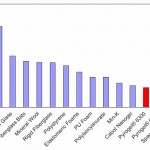Arising from my interest in impulse control, hyperbolic discounting, and will power I have been nursing an interest in how people enforce their personal rules. Say you wish to promise to go to bed at 10pm, or not to drink before 5pm, or to save 10% of your income, or call your mom once a week what tools exist to help you keep those promises. The literature highlights the amusing point that you can’t write contracts with your self as the counter party and then expect to have recourse to the courts when you break those contracts.
If you keep your eyes open you will notice assorted tools for self binding. To do lists, reminder services, and date books are simple examples. There are software applications that will lock out your internet access. There are savings plans that include a penalty for early withdrawal. In Arizona you can sign onto a list that requires the casino to deny you access.
Some of the promise keeping aids involve enlisting a third party. There is a horrible scheme that addicts fall into where they enlist a friend and license him to punish them in some awful manner if they break their promise. For example they might write a letter which will ruin their professional life if revealed and then give it to the third party. Once you introduce the third party there is all kinds of risk for abuse. The third party might extract a promise from a victim during an irrational moment by coercion. A light weight example of that is how the salesman at the health club pressures customers into signing up for a subscription. And then, there are chastity belts.
Some of these promise or binding technologies are designed to remove the temptation entirely. For example: living in the dry town, never buying the liquor, and avoiding the pub. And those come in degrees – for example moving the ice cream to the back of the freezer.
I’ve been stewing on what might be the lightest weight service a third party could offer to help individuals with this class of problems. And I have a theory. It’s based on the time-lock example used for bank vaults. In that case the bank want’s to remove any possibility of opening the vault for some period of time – usually while the bank is closed. While obviously the bank’s intent is to keep criminals from stealing their money they actually promise not to open the vault under any circumstances. They are self binding. They could of locked the vault with a one time password and given it to a trusted officer of the bank. They don’t trust themselves. Apparently the only thing they trust is the people who built the vault. It’s interesting that if you look at pictures of these time locks they are usually in transparent cases so anybody can visually inspect the mechanism. They are over engineered and simple which encourages that inspection.
Say you wanted to lock up a present for christmas day. You put it in a safe, put it under the tree, and christmas morning you hand the key to the recipient. But what if you want to wrap up a present for yourself and you don’t trust yourself not to open it too soon. Now what? You could ask the help of a friend, but that’s got other complications. Can you solve this problem without a third party? You could if you could buy a time-lock. I’d love to know of a vendor. I’ve not found one. I find that bizarre; surely there are lots of people who’d like to lock things overnight etc.
Anyhow, I’ve built one for you. It’s based on a bit-o-crypto. You lock up things up by encrypting them, and later when the timer runs out you can decrypt them. Frustratingly this does involve a third party, my little service. You get the means to encrypt by going to the service, and later once the timer has run out, you go back to get the means to decrypt. This depends on public/private keys. You use the public key to encrypt and the private key to decrypt.
For example say you want to make it much harder to play that damn addictive video game until next tuesday. You go grab the public key for next tuesday and lock away the damn game by encrypting it. Next tuesday, or sometime after, you go grab the private key and decrypt the stupid game.
Of course this requires that you trust me to keep the service running and not loose the keys it gin’d up. I wouldn’t recommend trusting me, yet. For example I really haven’t tested it much :).
Here’s the service http://hang-on.appspot.com/. I’d love to hear suggestions for things to do with this, or ways to improve it.



